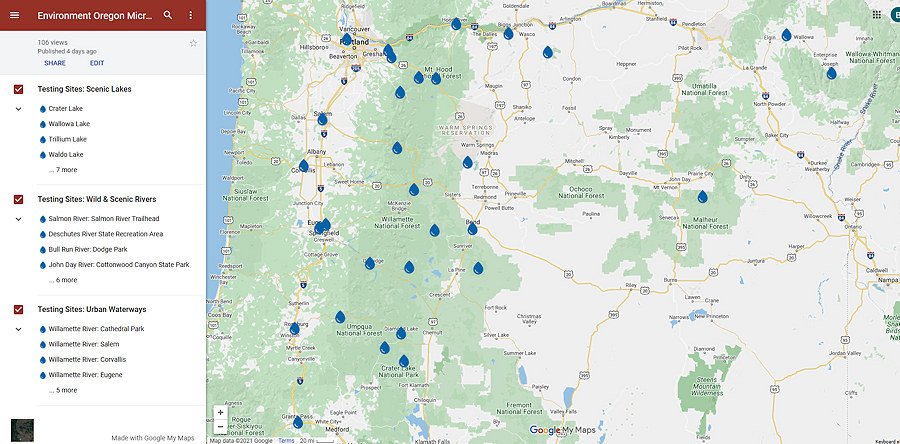Microplastic contamination found in all 30 tested Oregon waterways, environmental group says

PORTLAND, Ore. (KTVZ) – At 30 waterways tested across Oregon, microplastic contamination was found in every spot -- from the rivers that flow through our biggest urban centers to the state’s most remote and treasured waterways, like Crater Lake and Wallowa Lake, an environmental group reported Monday.
The findings are outlined in a new report, Microplastics in Oregon: a Survey of Waterways, released Monday by Environment Oregon Research & Policy Center using methodology developed by the National Oceanic and Atmospheric Administration, the organization said in a news release, which continues in full below.
"The results of this study should set off alarms for all Oregonians who love our state's rivers and lakes," said Celeste Meiffren-Swango, state director with Environment Oregon Research & Policy Center. "The staggering amount of microplastics we found likely means that no river, lake or stream is safe from this increasingly common contaminant."
Samples from all 30 waterways had at least one type of microplastic contamination. This included such popular locations as the Willamette River, the John Day River, Lake Billy Chinook and Waldo Lake.
Microplastics are pieces of plastic less than 5 millimeters in diameter, which is smaller than a grain of rice.
A full list of waterways tested and the types of microplastics at each can be found in the report and this interactive map.
Along with the help of concerned citizens across Oregon, Environment Oregon Research & Policy Center staff collected water samples as part of the citizen-science project to identify plastic pollution in local waterways. Results for each waterway and photos from sampling can be found in this map. Locations are tagged at the approximate point where samples were taken.
Americans generate more than 35 million tons of plastic waste every year and less than 10% is recycled. The rest ends up as litter or gets sent to landfills or incinerators where it will release microplastics over time that can get carried by wind or rain into the environment.
Microfibers, a type of plastic found in every waterway, come from textiles and are shed through normal wear and tear or routine machine washing. It’s almost impossible for water treatment plants to filter these pollutants out.
River and beach clean-ups and conservation efforts help with more visible forms of litter and pollution, but the small size of microplastics makes it easy for them to travel from their source to waterways near and far, carrying contaminants and chemicals that work their way up the food chain through wildlife and humans.
"This work highlights the importance of working on plastic pollution solutions both in our state through diverging from single-use plastics and at the industry and federal level through innovation and limiting plastic production," said Charlie Plybon, Policy Manager at Surfrider Foundation. "This is more of an Oregon and US pollution problem than we'd like to admit and these samples from our most iconic waterways in the state should resonate with a responsibility to act."
The report outlines a broad range of policy solutions to tackle the problem, including phasing out single-use plastic foodware like polystyrene foam and updating the rules to allow Oregonians to bring their own reusable containers and produce bags to grocery stores and restaurants.
"There is no silver bullet solution to stop microplastics from entering our waterways," Meiffren-Swango said. "But this should be a wake up call for local, state and national leaders that our plastic pollution problem is growing, it's impacting even our most treasured places and we need to do everything we can to move beyond plastic before it's too late."
# # #
Environment Oregon Research & Policy Center is dedicated to protecting our air, water and open spaces. We investigate problems, craft solutions, educate the public and decision-makers, and help the public make their voices heard in local, state and national debate over the quality of our environment and our lives. To learn more, visit https://environmentoregoncenter.org/.